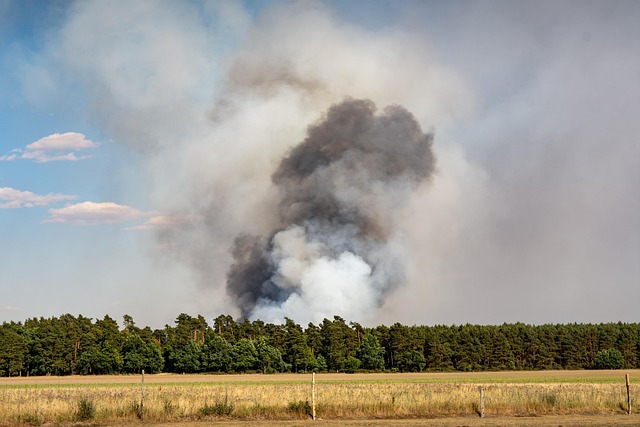Texas homeowners with fire damage should follow these key steps for their insurance claims: 1) Conduct a thorough assessment and document losses visually and through records. 2) Understand policy terms like actual cash value and replacement cost. 3) Seek expert advice from local restoration specialists. 4) After eliminating smoke odors using ventilation, cleaning, and air purifiers, prepare the home for inspection to support the claim.
Fire restoration after a devastating event is crucial, but eliminating smoke odor often goes overlooked. This guide navigates the process of smoke odor elimination, offering valuable insights for Texas homeowners with fire damage insurance claims. We explore the steps involved in understanding fire restoration, navigating insurance procedures, and provide effective tips for removing persistent odors. With these strategies, you can restore your home to a fresh, livable space after a fire, ensuring peace of mind for Texas homeowners.
- Understanding Fire Restoration and Smoke Odor Elimination Process
- Navigating Fire Damage Insurance Claims in Texas
- Tips for Effective Smoke Odor Removal in Your Home
Understanding Fire Restoration and Smoke Odor Elimination Process

Fire restoration and smoke odor elimination are essential steps in recovering from fire damage. For Texas homeowners with a fire damage insurance claim, understanding this process is crucial. It involves several specialized techniques to safely remove hazardous fumes and restore a property to its pre-fire condition. Professional restorers use advanced equipment and knowledge of chemistry to neutralize odours and contaminants left behind by fires.
The first step is often an extensive assessment to identify the extent of damage and determine appropriate restoration methods. This includes analyzing air quality, checking for hidden smoke and water damage, and assessing structural integrity. Once assessed, professionals employ tools like air scrubbers, dehumidifiers, and odor neutralizers to eliminate unpleasant smells and ensure a safe living environment. The process may also include surface cleaning, repainting, or replacing affected items to restore the home’s aesthetic appeal.
Navigating Fire Damage Insurance Claims in Texas

Navigating fire damage insurance claims in Texas can be a complex process, especially for first-time claimants. As a Texas homeowner, understanding your rights and the steps involved is crucial to ensuring a smooth recovery. Start by documenting all losses thoroughly; take photos of damaged property, keep records of expenses related to temporary housing, and maintain a log of communication with your insurance company.
Next, review your policy carefully to identify covered damages associated with fire restoration. Familiarize yourself with terms like actual cash value and replacement cost, which determine the compensation for your losses. Consider seeking expert advice from local restoration specialists who can provide detailed estimates, helping you maximize your claim. Remember, clear communication with your insurance provider is key; be prepared to answer questions accurately and keep records of all interactions.
Tips for Effective Smoke Odor Removal in Your Home

After a fire and smoke damage, eliminating odors is crucial for a safe and comfortable return home. As Texas homeowners, navigating a fire restoration process involves more than just structural repairs; it’s about regaining a sense of normalcy and that starts with freshening the air. One effective method is to open windows and doors to let in outdoor air, which can help dissipate smoke odors naturally. Using fans or air purifiers can also accelerate this process, especially in larger spaces.
When it comes to cleaning, start by removing all sources of odor, like burnt furniture or clothing. Deep clean surfaces with non-ammonia-based cleaners as ammonia can react with smoke residues and create stronger odors. For stubborn smells, consider using charcoal or oxygen-based products designed specifically for smoke odor removal. Remember, patience is key; even after cleaning, odors may return over time, so monitor air quality regularly until the scent is completely gone, ensuring a safe environment for your family when filing a fire damage insurance claim.
Fire restoration and smoke odor elimination are critical steps in recovering from fire damage. Understanding the process, knowing your rights regarding insurance claims, and employing effective removal techniques are essential for Texas homeowners. By following these guidelines, you can ensure a smoother transition back into your home, enjoying a fresh and clean environment free from lingering odors. Remember, prompt action is key to minimizing damage and maximizing insurance benefits during fire restoration.
